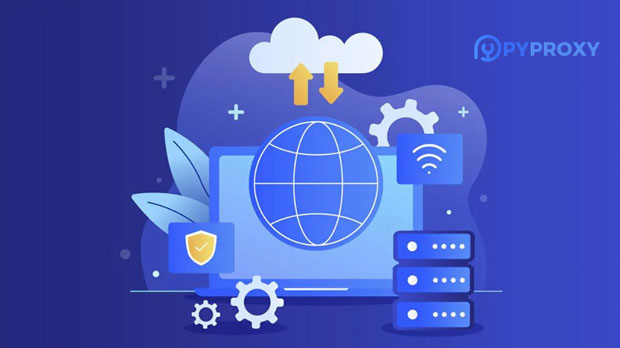Browser incognito mode is widely used to enhance privacy by preventing the storage of browsing history, cookies, and site data. However, users often seek additional privacy measures, such as automatic proxy support in incognito mode, to further secure their online activities. A proxy server acts as an intermediary between the user's device and the internet, masking the user's IP address, thus providing anonymity and protecting sensitive information from being exposed. This article delves into the platforms that support automatic proxy in incognito mode, helping users understand how to achieve better privacy and security while browsing. Understanding Incognito Mode and Its LimitationsIncognito mode, or private browsing, is a feature found in most modern browsers that allows users to surf the web without leaving traces on their local device. When using this mode, the browser typically doesn't store browsing history, cookies, site data, or form inputs. However, despite these privacy features, incognito mode has its limitations:1. IP Address Visibility: Even when browsing in incognito mode, the user's IP address is still visible to websites, Internet Service Providers (ISPs), and any other entities monitoring internet traffic.2. Limited Protection: Incognito mode doesn't provide complete anonymity. While it prevents local tracking, it doesn’t protect against external tracking methods such as IP-based tracking, tracking via external scripts, or third-party surveillance.3. No Proxy by Default: Many browsers do not automatically route incognito traffic through a proxy server, meaning that users are still exposed to their real IP address unless additional tools are implemented.Why Is Automatic Proxy Support Important?For individuals seeking to maximize their online privacy, using a proxy server is a powerful tool. A proxy can:- Mask IP Address: The proxy server assigns an IP address from its own pool, making it difficult for websites to track the user's real location and identity.- Enhance Security: Proxies can add an extra layer of encryption, making it harder for cybercriminals or malicious websites to intercept sensitive data, such as passwords and personal details.- Bypass Geo-Restrictions: Proxies can help users access content that may be restricted in certain regions by changing the apparent location of their IP address.Automatic proxy support in incognito mode means that the user doesn’t have to manually configure proxy settings every time they enter incognito mode. This automated process ensures that all traffic is securely routed through the proxy without requiring any additional steps, enhancing both convenience and privacy.Which Platforms Support Automatic Proxy in Incognito Mode?Several modern browsers and operating systems offer varying degrees of support for automatic proxy functionality in incognito mode. Below are some of the platforms that provide this feature:1. Google Chrome with ExtensionsGoogle Chrome, the world’s most popular browser, doesn’t offer built-in support for automatic proxy configuration in incognito mode by default. However, users can install proxy extensions from the Chrome Web Store that allow them to route incognito traffic through a proxy server automatically. Extensions such as "Proxy SwitchyOmega" allow users to set up custom proxy rules that can be activated in incognito mode, ensuring that all incognito browsing sessions use the designated proxy server.2. Mozilla Firefox with Proxy SettingsMozilla Firefox offers greater flexibility when it comes to configuring proxies, including in incognito or private browsing mode. Firefox allows users to set a system-wide proxy configuration that applies to both regular and private browsing sessions. However, like Chrome, this requires users to manually configure the proxy settings within the browser’s preferences. While it does not have a fully automated proxy system for incognito mode out of the box, users can ensure consistent proxy use through manual configuration.3. Opera Browser's Built-In Proxy SupportOpera is another browser that integrates proxy support directly into its system. Opera includes a built-in VPN feature that automatically routes all traffic, including incognito sessions, through the VPN server. This is a major advantage for users who wish to browse anonymously in incognito mode without the need for external proxy tools. Since Opera's VPN feature is built-in, it provides an easy, one-click solution for maintaining privacy and security during private browsing.4. Microsoft Edge with Proxy ConfigurationMicrosoft Edge, similar to Firefox, allows users to configure system-wide proxy settings that will apply to both regular and incognito browsing sessions. While Edge doesn’t have built-in support for automatic proxies in incognito mode, users can manually configure proxy settings within Windows settings, ensuring that all browsing traffic, including private mode, is routed through the proxy server. Additionally, Edge users can benefit from third-party proxy extensions to automate proxy use in incognito mode.5. Safari with macOS Proxy SettingsSafari on macOS doesn’t have native support for automatic proxies in incognito mode. However, macOS allows users to configure system-wide proxies that affect all browsers, including Safari. By adjusting network settings on macOS, users can ensure that their browsing, including private sessions in Safari, goes through a proxy server. While this method is not as seamless as browser-based proxy extensions, it still offers a way to maintain proxy support during incognito sessions.6. Using VPN Software for Automatic Proxy in Incognito ModeWhile the aforementioned browsers offer partial or manual support for proxy use in incognito mode, a more consistent solution is to use third-party Virtual Private Network (VPN) software. Many VPNs offer the ability to route all internet traffic, including incognito mode, through their servers. This means that users can enjoy automatic proxy support without the need to configure individual browsers. VPN software is a convenient and effective way to ensure that all browsing, regardless of whether it’s in incognito mode or regular browsing, is protected by a proxy server.Why Users Should Consider Using Proxies in Incognito ModeEven though incognito mode can help protect user privacy on a local level, it doesn't provide complete anonymity. By incorporating proxies or VPNs, users can enjoy a much higher level of security and anonymity. Here are some reasons why users should consider using proxies in incognito mode:- Bypass Censorship: Proxies can help users bypass internet censorship, allowing them to access websites that may be blocked in certain regions.- Prevent Tracking: Proxies help prevent online tracking by masking the user's real IP address, making it difficult for websites and advertisers to follow their activities.- Enhanced Security: Proxies encrypt internet traffic, which helps prevent data breaches and cyber attacks, particularly when using unsecured networks like public Wi-Fi.ConclusionIn conclusion, while incognito mode offers basic privacy benefits, it is not a foolproof method for online anonymity. Platforms like Google Chrome, Mozilla Firefox, Opera, Microsoft Edge, and Safari provide varying levels of support for automatic proxy use in incognito mode, though some may require manual configuration or third-party tools like proxy extensions or VPN software. By leveraging these tools, users can enhance their online privacy, security, and freedom. Whether using a built-in VPN feature, configuring system-wide proxy settings, or employing browser extensions, there are various ways to ensure that incognito mode is both private and secure.
Jun 30, 2025


































































